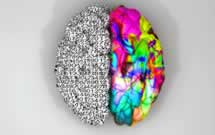Celebrate Brain Awareness Week by, well, using your brain and learning something new
 When it comes to student learning, many stakeholders focus on important learning supports, such as classroom technology, reliable high-speed internet access in schools, and educators who use technology as a tool to increase student achievement. But there’s another important component that is sometimes overlooked–the human brain, and how learning impacts its structure and function.
When it comes to student learning, many stakeholders focus on important learning supports, such as classroom technology, reliable high-speed internet access in schools, and educators who use technology as a tool to increase student achievement. But there’s another important component that is sometimes overlooked–the human brain, and how learning impacts its structure and function.
During Brain Awareness Week (March 10-14), a number of organizations are shedding light on how brain research informs education theory and practice.
Following are important and intriguing facts about the brain to help you learn more about how brain research can fit into teaching and learning.
(Next page: Brain facts and tips)
- Students often have one of two mindsets: fixed or growth. “Fixed” means students often don’t seem to realize the value of effort, and “growth” refers to the students who are determined to progress.
- Engaging in critical thinking expands activity in brain regions outside of those responsible for “executive function,” and includes activity in areas used for physical activity. Close reading activates areas of the brain that are used for very cognitively complex challenges, such as complicated math problems or computing coding.
- Stress, fear of failing, and anxiety all lead the brain to believe there is a “perceived threat,” which causes it to lose its ability to perform higher-order thinking skills. This perceived threat can inhibit learning in class.
- Headsets that include a sensor that make contact with the wearer’s frontal lobe can read the user’s brain wave signals and gauge student attentiveness. Brain wave patterns for signatures according to what an individual is thinking, and the headset software learns an individual’s unique signature pattern and can measure how engaged that user is with the concept or material being taught.
- “Good” stress, including deadlines and challenges, causes the brain to release norepinephrine, which is necessary to create new memories. It also encourages creative thinking and stimulates the growth of new connections.
- When you learn, your brain structure changes. Learning sends messages along pathways of neurons and forms new connections. Your brain’s structure changes each time you learn, have a memory, or think of something new.
- Instruction must involve a number of components, including novel concepts and different stimuli, to avoid neural system fatigue.
- 4 ways to support work-based learning - April 23, 2024
- Prioritizing inclusivity in game-based learning - April 22, 2024
- Friday 5: Universal Design for Learning - April 19, 2024
